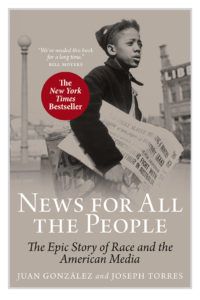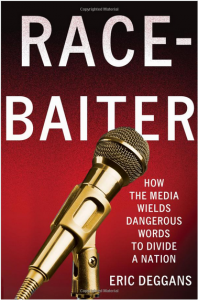
Searing Literary Explorations About Racial Stereotypes
Language is the building block of stereotypes. And stereotyping narratives affect people in all sorts of direct and indirect ways, even including their health. For instance, research suggests that medical professionals’ clinical work is influenced by stereotypes about race groups. Some of this may be understandable. Medical staff are sometimes working under extreme time pressure, and stereotypes are convenient ways of assessing probabilities. As well, this stuff is circular. If a Black patient receives subpar medical care, he’s less likely to trust nurses in the future. And if he’s seen as belligerent, nurses are more likely to lose patience with him. In other words, stories spread about particular racial groups get absorbed by medical practitioners, and sometimes affect the quality of care.

Stereotyping itself has a long history, of course. As Jonathon Green writes of racially specific terms in Words Apart: The Language of Prejudice, “Race is based on stereotypes; without them the majority of these terms would not exist…In this world of aggression, what matters is not the ingredients, but the brand-name…Not every one of these words has the same effect, nor have all been as deadly as the sedulous preaching against the Jewish ‘Christ-killers’ which led inexorably to Auschwitz and Treblinka, or the doctrine of Black inferiority which helped fill the slave-barracoons of the West African coastline and justify the horrors of the ‘Middle Passage’ – but the general effect is all too simple: brand a people long enough and anything is possible…. whatever the context the drip-drip-drip effect of these words is to numb their users (and hearers) to their full import.”
In other words, society gets used to reducing people to a certain story or label, and it becomes easier to justify unfair treatment of them.
Cognitive linguistics has shown that metaphors can dramatically affect opinions. For instance, study participants who read a description of crime as a “virus” versus a “beast” were found to have different opinions about how that crime should be tackled. Those primed with the “virus” metaphor supported reform of the root causes of violence, while those in the “beast” camp favored longer punishment. Yet although this metaphorical priming made for substantial differences in attitudes, study participants weren’t aware of the effect that the metaphor had on those opinions. Because humans not only talk, but also think, in metaphors, words have a powerful influence on the content of thoughts. This is especially true when they become part of intuition, as with stereotypes.
One reason stereotyping is so seductive is that the brain, like the body, wants to take shortcuts. In exercise terms: it’s easy, if you’re not being watched by a tyrannical gym instructor or a fitness-mad friend, to squat down only slightly. In mental terms: it’s also more comfortable to not have to stretch cultural understanding. It’s tiring to work hard at appreciating complex stories. Falling into familiar narrative grooves ― silly Frenchman, rude Chinese woman ― is comfortable at the end of a long day, when the TV is switched on.
Not only are stereotypes a relief for a tired brain, making them so dangerously tempting, but these cliched stories often work under the surface. So they can be hard to spot, let alone eradicate.
Racial Stereotypes in the U.S.
There’s a long history of American media seizing upon racial stereotypes. The country’s first newspaper, Publick Occurrences Both Forreign and Domestick [sic], was launched in 1690. This carried a number of articles about violence committed by Native Americans, with coverage almost uniformly negative. And these early journalists deliberately used certain repeated language to create associations of deviant behavior with non-white groups. Journalists Juan González and Joseph Torres explain in News for All the People: The Epic Story of Race and the American Media, “Descriptions of ‘Sculking’ or ‘barbarous’ Indians were commonplace then, much as today’s news media use terms such as ‘wolf packs,’ ‘drug gangs,’ and ‘super-predators’ as monikers for non-white criminals.”

These prejudicial tendencies have never gone away, and some technological and economic developments have actually strengthened them. In the analysis of González and Torres, the centralization of media delivery, with the rise of the telegraph, changed news reporting styles, so that race-based stereotypes and narratives became very prominent. The speed of this technology influenced an appetite for shorter articles with simplistic headlines. And “the stories most likely to meet those requirements were those that triggered common stereotypes in the mind of the average reader, that reinforced pre-existing biases instead of challenging them.” In the most grievous cases, publications incited racial violence, for instance during the Ku Klux Klan’s reign of terror.
Today, “strapping young buck,” “criminal aliens,” and other dog whistle lines are, in the words of TV critic Eric Deggans in Race-Baiter: How the Media Wields Dangerous Words to Divide a Nation, “phrases intended to provoke deep-seated, even unconscious prejudice.” This is because “racially charged rhetoric works best in modern American politics when the language is implicit rather than explicit.”

Basically, most people don’t want to be considered racists, and don’t see themselves that way. So covert language is useful for subtly reinforcing certain ideas that, if they were more obvious, the majority would reject right away. But this death by a thousand cuts allows for images and ideas to take root, regardless of fact. It doesn’t matter to many people that welfare beneficiaries are mainly white, or that Black poverty isn’t just an urban problem, or that Asian women aren’t all meek and compliant. The frequent repetition of “welfare queen,” “inner city,” and “China doll” lodges the stereotypes in brains. Subtle, cliched associations develop especially strongly in children’s brains, because they learn through repetition.
Skewed ideas about what poverty looks like contribute to racialized ideas of the “undeserving poor” and the impossibility of eradicating minority poverty. Race-Baiter supports this by pointing to the research of Robert M. Entman and Andrew Rojecki, who “discovered that TV so often illustrated stories on poverty with images of black people that the two had become synonymous for news consumers—especially white viewers.”
Changing the Stories
There’s long been a myth in mostly white countries that white people have more varied and important stories than others. And again and again, the same kinds of words and plot lines are used to describe the experiences of non-white people in a variety of popular culture. Latinas are feisty; Latinos are macho. East Asians are either submissive or martial arts stars. South Asians are doctors or convenience store owners. Black men are thugs; Black women are angry. Native Americans are noble or tragic – often both.
Nigerian writer Chimamanda Ngozi Adichie explains this well in a talk titled “The danger of a single story.” A single story might be that all Africans are impoverished, yet as the middle-class daughter of an administrator and a professor, she knows that’s not true.
When she moved to the U.S. for college, this single story was referenced by Adichie’s new roommate, who assumed that Adichie couldn’t use a stove and couldn’t be familiar with American pop culture. Some people of color might assume that this problem is limited to blithely oblivious white people, but clearly that’s not true. Adichie found herself guilty of falling into the same trip when she visited Guadalajara, Mexico. American media coverage of immigration controversy had led her to expect the country to be dysfunctional and broken-down. But as she saw people going about their daily business, like anyone anywhere, she realized how wrong she’d been.
Mexico was more than just dysfunction. Nigeria was more than just terror. America was more than just power. There were many versions of each.
As someone who loves creating stories and hearing other people’s stories, Adichie sees that these can be damaging or illuminating. She says near the end of her talk:
“Stories matter. Many stories matter. Stories have been used to dispossess and to malign, but stories can also be used to empower and to humanize. Stories can break the dignity of a people, but stories can also repair that broken dignity.”










